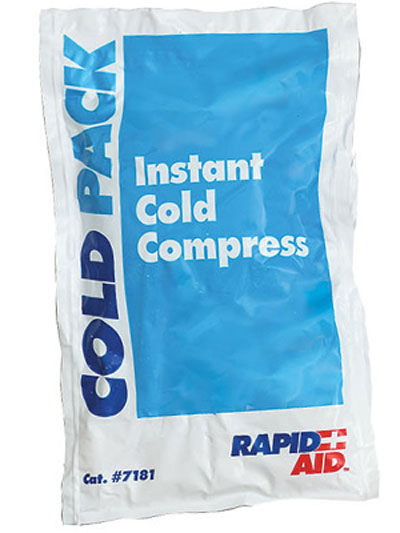 Simple as it seems, heat or cold application can provide a surprising amount of pain relief for most types of back and neck pain.
Simple as it seems, heat or cold application can provide a surprising amount of pain relief for most types of back and neck pain.
- Cold packs help reduce inflammation and numb a painful area.
- Heat packs help increase circulation to a specific area of the body and can promote healing.
What most people don’t know is that it is easy to make a hot or cold pack – providing you with convenience of having one ready whenever you need it, and often saving a lot of money.
Homemade Gel Ice Packs
If you don’t want to grab a bag of frozen peas or corn every time your pain flares up, a gel ice pack can be great way to get some fast relief. You can make a quart sized gel pack for under $3.
What you need:
- 1 quart or 1 gallon plastic freezer bags (depending on how large you want the cold pack)
- Water
- Rubbing alcohol
Fill the plastic freezer bag with one cup of rubbing alcohol and 2 cups of water. For a less dense gel, reduce the amount of water to 1 cup. Or you can increase the water amount to make the gel thicker, but remember only 4 cups of liquid will fit into a 1 quart bag, so it is best to use less than 3 cups of water with the 1 cup of rubbing alcohol. Try to get as much air out of the freezer bag before sealing it shut, then put it inside a second freezer bag – this way there is less chance of a leak. Place a towel between the gel pack and bare skin to avoid burning the skin.
Homemade Moist Heat Packs
When cold isn’t what your back or neck needs, a heat pack can often bring a lot of relief. Electric heating pads bring a “dry heat”, which many people find to be less comforting than moist heat. With these moist heat packs, there is a large range of effort you can put into the project, as you will learn.
What you need:
- Cloth container (sock, fabric)
- Filling (rice, flax seed, buckwheat, oatmeal)
- Needle and Thread (optional, but recommended)
- Flair (ribbon, fragrant oils; optional)
 The easiest method is to get some uncooked rice (4-6 cups or about 2 pounds) and fill a clean tube sock, and then tightly tie the sock closed. This will warm with about 1-3 minutes in the microwave. For a quick use, this will do but if you plan to use the heat pack more than a couple times, you should make sure the filling is secure by using a needle and thread because the knot can come undone.
The easiest method is to get some uncooked rice (4-6 cups or about 2 pounds) and fill a clean tube sock, and then tightly tie the sock closed. This will warm with about 1-3 minutes in the microwave. For a quick use, this will do but if you plan to use the heat pack more than a couple times, you should make sure the filling is secure by using a needle and thread because the knot can come undone.
Other filling materials are flax seed, buckwheat, or oatmeal. For a craftier project, you can purchase fabric and make whatever shape and size heat pack you want. You can also add fragrant oil to infuse aromatherapy into the filling material or add a tied ribbon to “pretty up” your heat pack.
With both heat packs and cold packs, it is recommended that they be applied for 15 minutes (or less) at a time. The two can be alternated 15 minutes on then 15 minutes off for an hour or two.
Source: www.spine-health.com; Jim Payseur; June 25; 2012.







